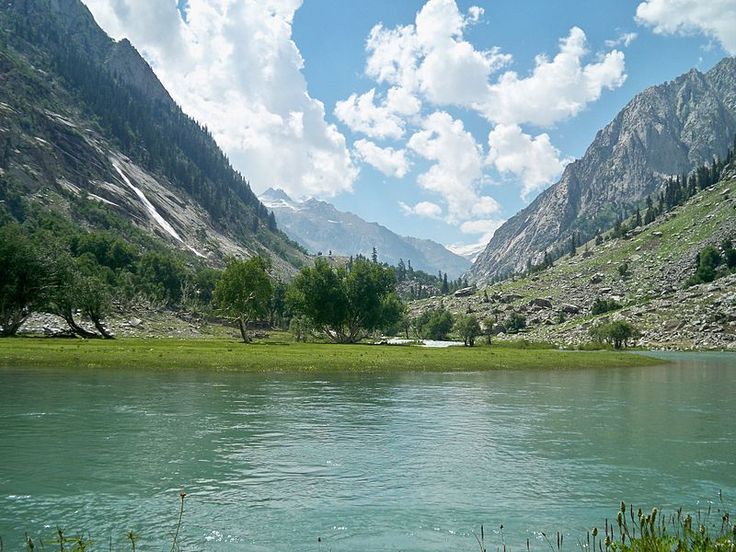Swat; district of the Malakand division, Khyber Pakhtunkhwa, Pakistan with capital city Saidu Sharif, famous for its beautiful forests and gardens and is historically known as Uddayana. It was a princely state (Yusafzai State of Swat) when it was dissolved and is populated mostly by ethnic Pashtuns, Gujjar and Kohistani communities. The languages spoken in the valley are Pashto, Gojri, Torwali and Kohistani.It is sometimes assumed that SWAT is an abbreviation of Scenery which attract tourists with its Soil, water, Atmosphere and Trees and sometimes it’s Soothing, Wonderful, astonishing and Thrilling.
History
Swat was ruled by many rulers with different religions.
- Firstly, there was Buddhist heritage under king Indrabhuti.
- Secondly, Swat was ruled by Hindu Shahi rulers and Sanskrit.
- Thirdly, it was the period of advent of Islam by Mahmud Ghazni, Buddhism that was spread in the whole Swat valley and after Buddhist phase the Hindu religion emerged, so that at the time of the Muslim conquest the population was solidly Hindu.
In 1023, Mahmud Ghazni attacked Swat and crushed the last Buddhist King, Raja Gira in battle and it is of special importance because of the introduction of Islam as well as changing Chronology.The first Muslim arrivals in Swat were Pakhtun Dilazak tribes from south-east Afghanistan. These were later ousted by swati Pakhtuns, succeeded by Yousufzai Pakhtuns. Both groups of Pakhtuns came from the Kandahar and Kabul valley.
Renowned Places
Swat is known as Paradise on Earth, Valley of Kings, Switzerland of Pakistan, Land of Stupas, Cradle of Civilization, Maye Gulfam(Wine of flowers), ghazal of Mir, story of Alif Laila etc all these names for a signle valley make us curious to know about it.
There are many beautiful places in swat that are the reason of attraction for the tourists.
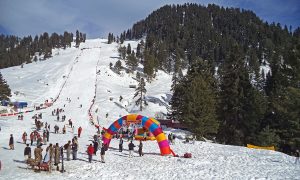 Karakoram mountain in Swat Valley and is home to the largest ski resort in Pakistan. That Resort was the joint effort of the Pakistan government with Austrian counterpart. The resort was equipped with modern facilities including ice-skating rinks, chair lifts, skiing platforms, telephones and snow clearing equipment. This resort was destroyed by the Taliban when they were in hold in swat valley. Now the government has been reinstated, peace is established and tourism has picked up.
Karakoram mountain in Swat Valley and is home to the largest ski resort in Pakistan. That Resort was the joint effort of the Pakistan government with Austrian counterpart. The resort was equipped with modern facilities including ice-skating rinks, chair lifts, skiing platforms, telephones and snow clearing equipment. This resort was destroyed by the Taliban when they were in hold in swat valley. Now the government has been reinstated, peace is established and tourism has picked up.
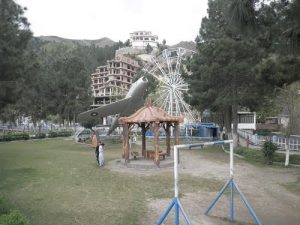 The old name of Fizagat was Qazagat; qaza meaning “death” and gat meaning “mount”. Thus, Qazagat was called the “Mount of Death”. It is said that during the rule of Miangul Ab
The old name of Fizagat was Qazagat; qaza meaning “death” and gat meaning “mount”. Thus, Qazagat was called the “Mount of Death”. It is said that during the rule of Miangul Abdul Wadud (Badshah Sahib) Wali of Swat, the convicted were punished at the top of this mount. A recreation arena for the tourists, Situated along the bank of the river Swat, they enjoy bath and pleasant climate in summer.
16 km away from Saidu 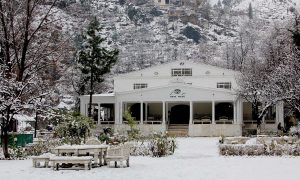 Sharif; famous for its Sufed Mahal the white marble palace built by the first Wali (ruler) of Swat and used to be the ruler’s summer residence. The marble used to build White Palace was the same marble which was used to build Taj Mahal.
Sharif; famous for its Sufed Mahal the white marble palace built by the first Wali (ruler) of Swat and used to be the ruler’s summer residence. The marble used to build White Palace was the same marble which was used to build Taj Mahal.
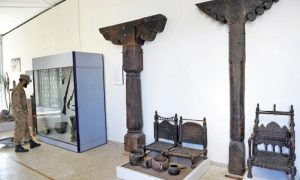 It is situated on the east side of the street, halfway between Mingora and Saidu. For the last three years the museum is occupied by Pakistan army.
It is situated on the east side of the street, halfway between Mingora and Saidu. For the last three years the museum is occupied by Pakistan army.
A small summer 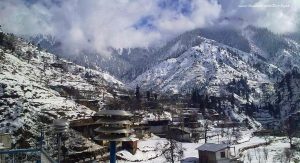 resort and is a good place for walkers. Paths follow the stream, past houses with beehives set into the walls and good-luck charms whitewashed around the doors.
resort and is a good place for walkers. Paths follow the stream, past houses with beehives set into the walls and good-luck charms whitewashed around the doors.
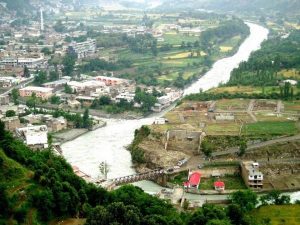 Here one senses why Swat is so popular among the tourists. There are a lot of embroidered shawls, antique and modern shawls, traditional embroidery, tribal jewellery, carved wood and antique or reproduced coins are sold along the main street.
Here one senses why Swat is so popular among the tourists. There are a lot of embroidered shawls, antique and modern shawls, traditional embroidery, tribal jewellery, carved wood and antique or reproduced coins are sold along the main street.
Quarter of an hour past 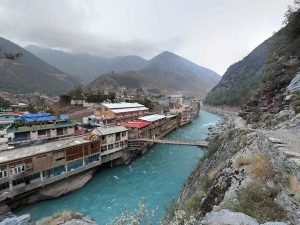 Madyan. Some of the houses have carved
Madyan. Some of the houses have carved
wooden doors, pillars and balconies. These show a remarkable variety of decorative motifs, including floral scrolls and bands of ornamental diaper patterns almost identical to those seen on Buddhist shrines and quite different from the usual Muslim designs. Because of intersection of two rivers this place is said to be call Bahrain. (Intersection of two Rivers)
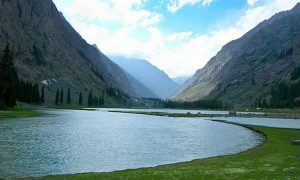 It was the centre of an independent state in the 19th century. It was later taken by Chitral then given to Swat after partition. In Kalam the Ushu and Utrot rivers join to form the Swat river. Here, the metalled road ends and shingle road leads to the Ushu and Utrot valleys.
It was the centre of an independent state in the 19th century. It was later taken by Chitral then given to Swat after partition. In Kalam the Ushu and Utrot rivers join to form the Swat river. Here, the metalled road ends and shingle road leads to the Ushu and Utrot valleys.
(also spelled Ushu) is a hill station in the north east of Kalam valley. It is situated at a distance of 8 kilometers from Saidu Sharif at the height of 2,300 metres. It is accessible through a non metalled road from Kalam by jeeps only.
Situated at a distance of 16 km from Kalam Valley and 120 km from Saidu Sharif. The population of Utror is 6888 and the area of the valley is about 47400 hectares.
Lake is situated to the
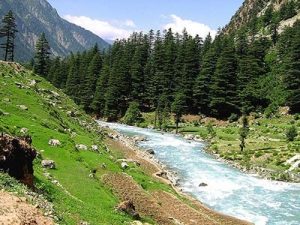 east of Bashigram valley near Madyan. The road to this valley is partly metaled and takes almost forty to fifty minutes to reach this valley inhibited by simple and hospitable people. From here, trekking of four to five hours lands you in the realm of a serene and enchanting lake of Bashigram.
east of Bashigram valley near Madyan. The road to this valley is partly metaled and takes almost forty to fifty minutes to reach this valley inhibited by simple and hospitable people. From here, trekking of four to five hours lands you in the realm of a serene and enchanting lake of Bashigram.
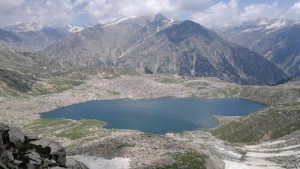 Daral Lake is situated in the western upper reaches of Bahrain. The trail to Daral is full of fun and amusement because it runs over sky touching heights of the mountains. Daral Lake is accessible only during the summer because during the winter, the trails which lead to the lake, are closed due to heavy snowfall.
Daral Lake is situated in the western upper reaches of Bahrain. The trail to Daral is full of fun and amusement because it runs over sky touching heights of the mountains. Daral Lake is accessible only during the summer because during the winter, the trails which lead to the lake, are closed due to heavy snowfall.
The valley of Swat has
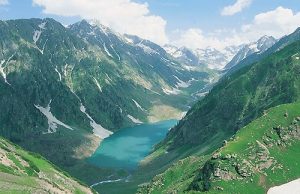 abundance of precious resorts of nature. Kundal Lake is situated in the north of Utror valley. One can easily access it from Kalam through Utror from where a link road ends in a green valley called Ladu. You can either hike to Ladu from Utror or take a four-wheeler to ease and minimize your journey. It consumes almost two hours to reach the beautiful valley of Ladu. The people who take temporary residency over here during summer plow the open land and harvest potatoes and turnips, which are famous all over the country for its exotic taste. The mountains around this small valley are covered with cedar and pine trees.
abundance of precious resorts of nature. Kundal Lake is situated in the north of Utror valley. One can easily access it from Kalam through Utror from where a link road ends in a green valley called Ladu. You can either hike to Ladu from Utror or take a four-wheeler to ease and minimize your journey. It consumes almost two hours to reach the beautiful valley of Ladu. The people who take temporary residency over here during summer plow the open land and harvest potatoes and turnips, which are famous all over the country for its exotic taste. The mountains around this small valley are covered with cedar and pine trees.
